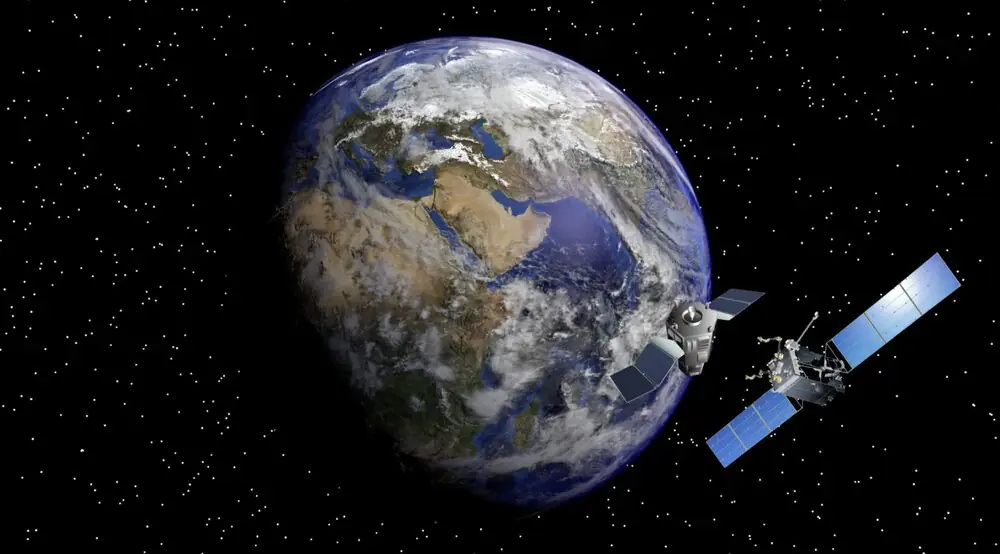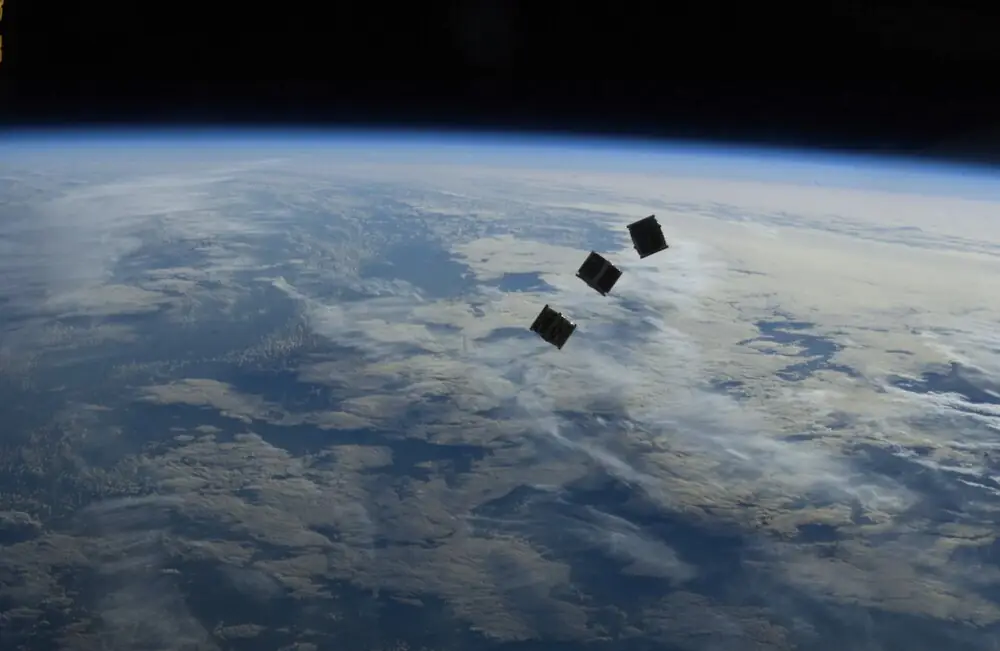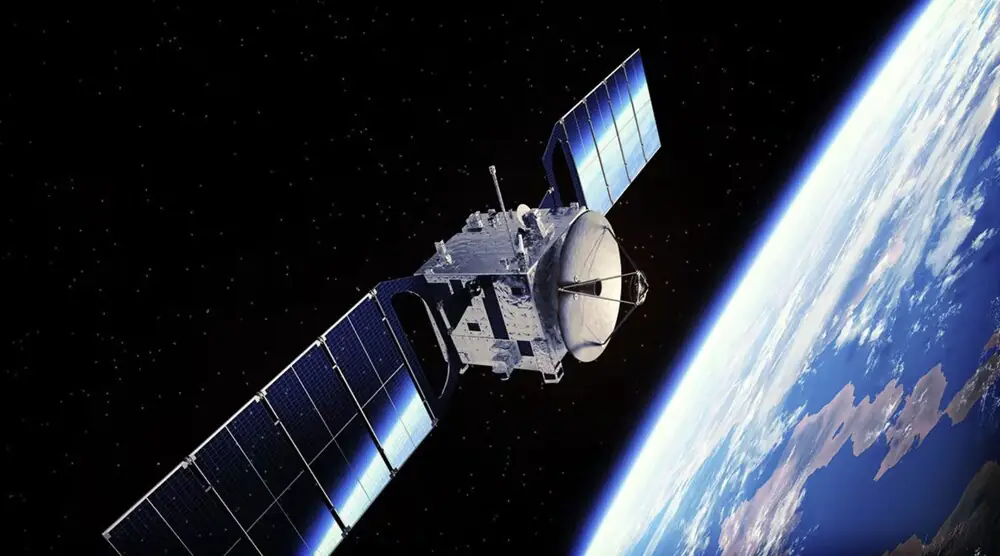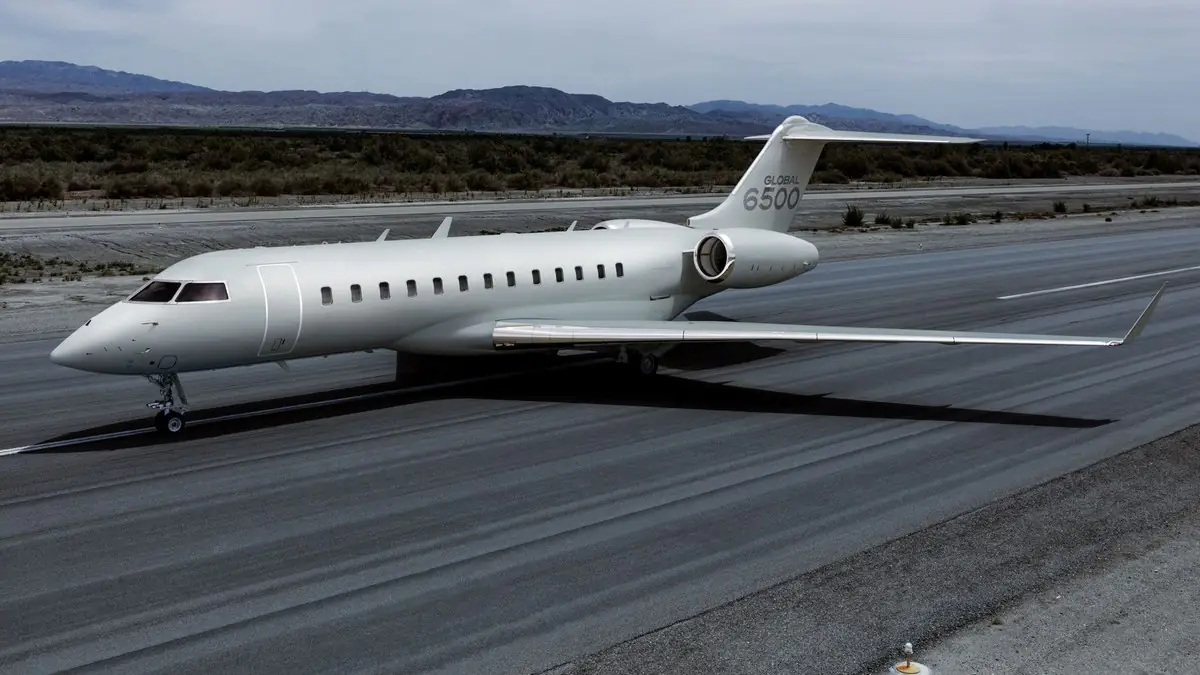Space is becoming a new arena of conflict. Strange things are happening up there. Are we heading toward a new kind of “Star Wars”? Let’s take a closer look.
There is a quiet but increasingly tense game unfolding in space between major powers. The recently launched Russian satellite, Kosmos-2588, which reached orbit in late May, approached the US reconnaissance satellite USA 338 to within about 100 kilometers – a very close distance by space standards.
This maneuver doesn’t appear accidental. Such a close approach seems like a carefully calculated show of capability. Suspicions are justified: Moscow might be advancing a new phase of its anti-satellite program. Observers suggest this could involve close-range optical surveillance or testing potentially aggressive tactics – ranging from signal jamming to physical interference.
All of this is happening amid intensifying competition in space, which has long ceased to be purely “peaceful.”
Space is no longer silent. It has become a tense arena for new moves by old rivals.
Read also: All about the new F-47 and the NGAD programme
TABLE OF CONTENT:
What happened
The Russian reconnaissance satellite Cosmos 2588 was launched into orbit on May 23, 2025. Almost immediately, analysts noticed a notable detail: its trajectory closely matches the orbit of the American reconnaissance satellite USA 338. This satellite is believed to be part of the renowned Crystal constellation, which operates under the U.S. National Reconnaissance Office’s (NRO) secret program focused on high-precision optical and electronic Earth observation from orbit.

Although the official orbital parameters of USA 338 remain classified, independent analysts worldwide have observed that the Russian satellite regularly approaches the American one – approximately once every four days. The flight altitude, orbital inclination, and timing of these close encounters suggest that Cosmos 2588 most likely functions as an inspection satellite, capable of conducting direct reconnaissance from orbit – possibly even attempting active data collection or signal interference.
Amid the rapidly escalating tensions in space security, such behavior of the satellite appears not merely as a demonstration of technological capability, but as a clear message: Russia is increasingly using orbit as a domain for hybrid confrontation.
Slingshot Aerospace reports that the suspected spy satellite Cosmos 2588 is actually a military inspection satellite called NIVELIR, which is believed to be equipped with kinetic weapons. Its close approach to the USA 338 satellite strongly suggests that Cosmos 2588 may be actively monitoring or “shadowing” it.
The closest distance between the Russian Cosmos 2588 and the American USA 338 is approximately 100 kilometers – a concerningly small gap by space standards.
To put this into perspective: the International Space Station maintains a safety buffer zone of several hundred kilometers from any potentially hazardous objects. In this case, the distance is four to ten times smaller. This is not an isolated incident.
Similar situations have been observed before, where Russian inspection satellites approached foreign objects at suspiciously close distances, raising concerns in Washington, London, and Brussels. The repeated nature of these maneuvers suggests they are not accidental but part of a deliberate strategy – testing capabilities for close approach, surveillance, or possibly interference.
In this new space geopolitics, a distance of 100 km is no longer about technology – it’s about a signal. And it sounds quite loud, even in airless space.
Read also: Everything Known About the Experimental UAV General Atomics A2LE
The quiet arms race in orbit is not so quiet anymore
This is not the first time Russia has launched a satellite into an orbit that closely matches the plane and parameters of another space object – typically an American one. Dutch astronomer and space security expert Marco Langbroek shared his analysis, noting that Cosmos 2588 is the fourth Russian satellite in the past five years to perform an almost identical maneuver targeting U.S. reconnaissance systems.
This pattern appears to be part of a strategic approach. In 2020, Cosmos 2542 approached US-245; in 2022, Cosmos 2558 entered an orbit trailing USA 326; and in 2023, another object came close to a classified, but suspected military, U.S. satellite. The scenario is consistent each time – close approach, shadowing, positioning, and possibly testing signal stability or conducting optical surveillance at close range.

This time, the situation could be more serious. According to Slingshot Aerospace, Cosmos 2588 belongs to the NIVELIR series – next-generation military satellites that are believed to be more than just surveillance platforms. They may serve as mobile orbital systems capable of deploying kinetic anti-satellite weapons.
This suggests that Cosmos 2588 might not simply be a reconnaissance satellite but a potential offensive asset able to disable or attack adversary satellites.
The orbit is no longer just a domain for observation; it has become a zone of risk. Each new close approach should be seen not as a gesture but as a warning.
Read also: How the F-15 Eagle Fighter Plane Destroyed the Solwind P78-1 Satellite
Weapons in space? It’s already a reality
In 2021, Russia conducted one of the most high-profile and controversial anti-satellite weapon tests by destroying its own outdated Soviet satellite in orbit. The test produced not only a technical demonstration but also a massive debris cloud: over 1,500 fragments that continue to pose a real threat to satellites, orbital stations, and future space missions.
This incident served as a warning to the international community, prompting the Biden administration to push for a United Nations resolution banning anti-satellite weapon (ASAT) tests. The resolution was supported by 155 countries but faced opposition from several, including Russia, China, Iran, Syria, Cuba, and a few others. This highlighted that not all actors are willing to exercise restraint.

In this context, the actions of Cosmos 2588 do not appear accidental but rather the next step in a consistent pattern. Even if the satellite is not formally identified as a weapon platform, its trajectory, close approach to USA 338, and likely association with the NIVELIR series raise serious concerns.
A U.S. Space Command representative told Breaking Defense:
“Russia continues to develop, test, and deploy systems that directly threaten stability and security in space.”
Space, once seen primarily as a domain for scientific progress and international cooperation, is increasingly becoming a potential conflict zone. The presence of weapons in orbit is no longer just a theoretical possibility.
Read also: All About the Turkish UAV Bayraktar Kizilelma: Development History and Prospects
Expanding Russia’s anti-satellite capabilities
Recent Russian actions in space have raised not only surprise in Washington but also significant concern due to the broader context. This is not an isolated incident but another warning sign in Moscow’s ongoing campaign to expand its anti-satellite (ASAT) capabilities.
As noted earlier, in 2021 Russia conducted a notorious test where it destroyed its own Soviet-era satellite, creating a cloud of thousands of pieces of space debris. The consequences were global: increased risks to both civilian and military assets in orbit, criticism from the international community, and a wave of diplomatic efforts aimed at banning ASAT weapon tests. The U.S., supported by 154 UN member states, pushed for a related resolution, which Russia, along with several allies, strongly opposed.

In this context, the trajectory of the satellite Cosmos 2588, which approached the U.S. satellite USA 338, is particularly concerning. This behavior is unlikely to be accidental or simply a “scientific experiment.” Experts believe it represents a deliberate exercise in interfering with foreign satellites, potentially up to their physical destruction.
The existence of technologies capable of disabling or destroying space assets effectively lays the groundwork for turning space into a new arena of power confrontation. If these maneuvers continue unchecked, the world could face a significantly heightened level of threat – both to strategic stability and to civilian infrastructure in orbit.
Read also: Can the U.S. Plant Its Flag on Mars?
Space Cold War 2.0
Recent events increasingly resemble a familiar scenario – but with new coordinates. The Cold War is returning, only now the arena is not over oceans or in the skies, but in orbit.
Satellite surveillance, aggressive maneuvers, provocative close approaches, and suspicions of space-based weapons are no longer abstract concepts but everyday realities in this new geopolitical landscape.
Russia no longer hides its work on technologies capable of jamming, blinding, or disabling adversary satellites. These could involve cyberattacks, electronic warfare, or even kinetic destruction.
This represents the core threat. Modern society depends heavily on satellite systems – for global navigation, weather forecasting, financial transactions, military operations, and communications. The destruction of just a few key satellites could destabilize this infrastructure.

We are increasingly witnessing space shift from a symbol of cooperation to a domain of strategic confrontation. While official statements remain diplomatic, the underlying logic of actions in orbit speaks for itself.
Space has never been as political, fragile, or tense as it is now. We look up at the stars – but must recognize that above us, a new, still silent, conflict is underway. And it has the potential to affect everything happening here on Earth.
Read also:








